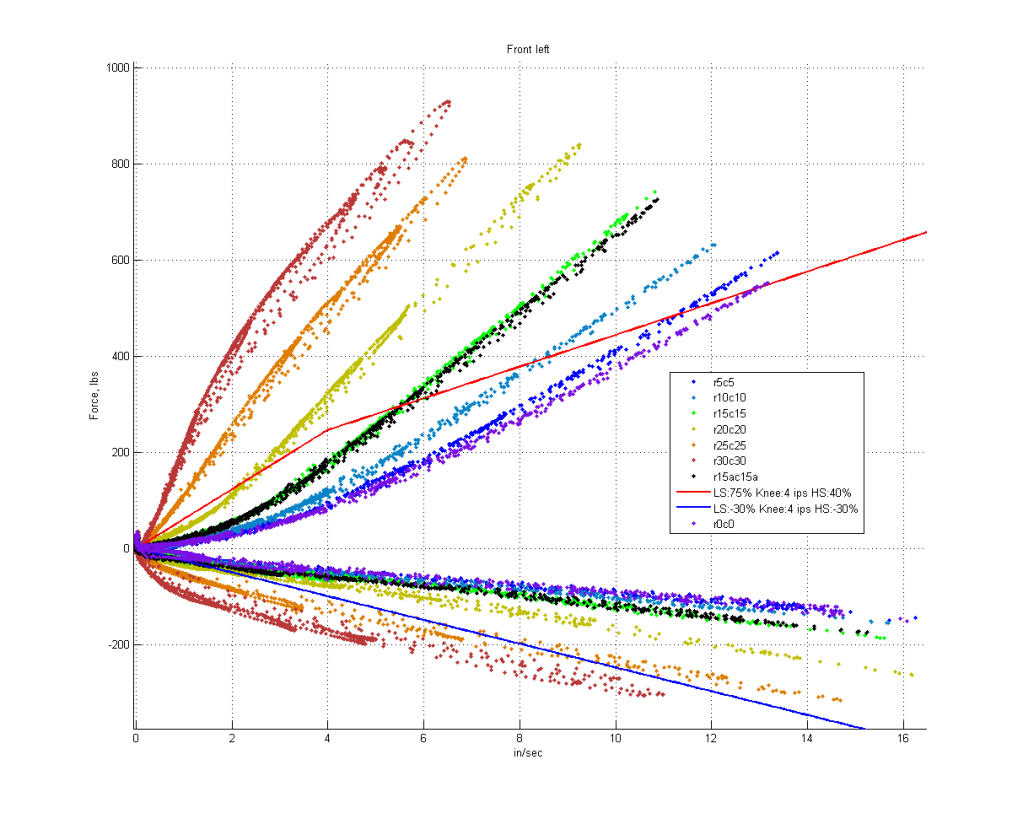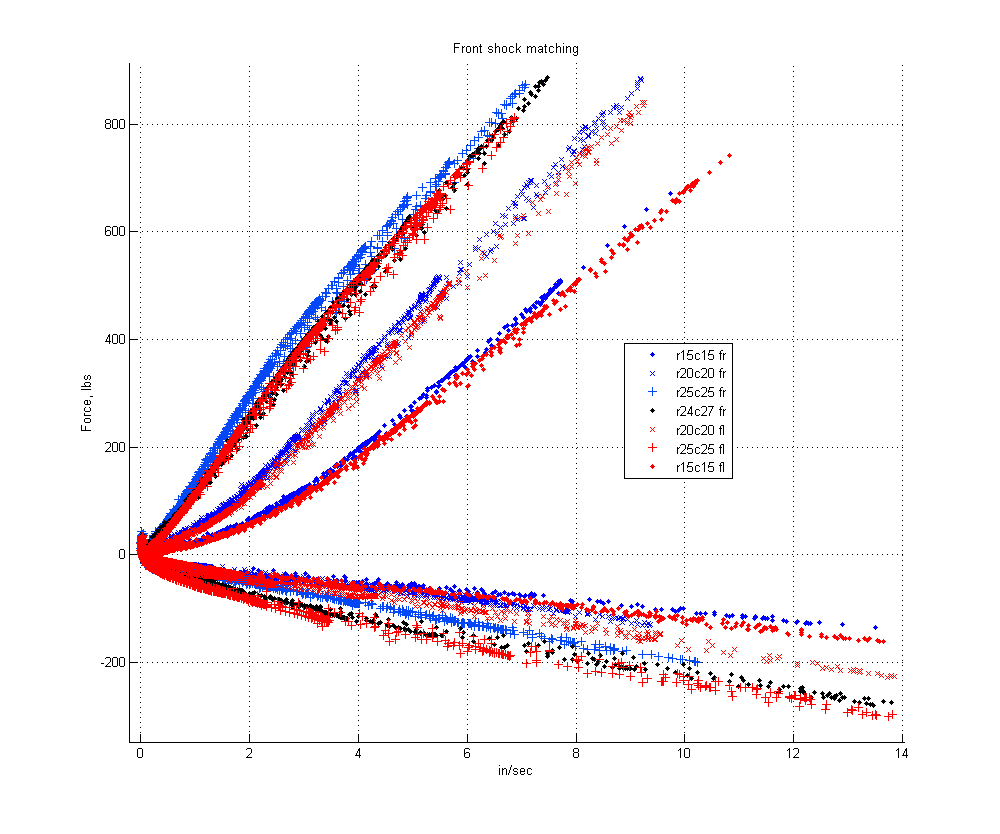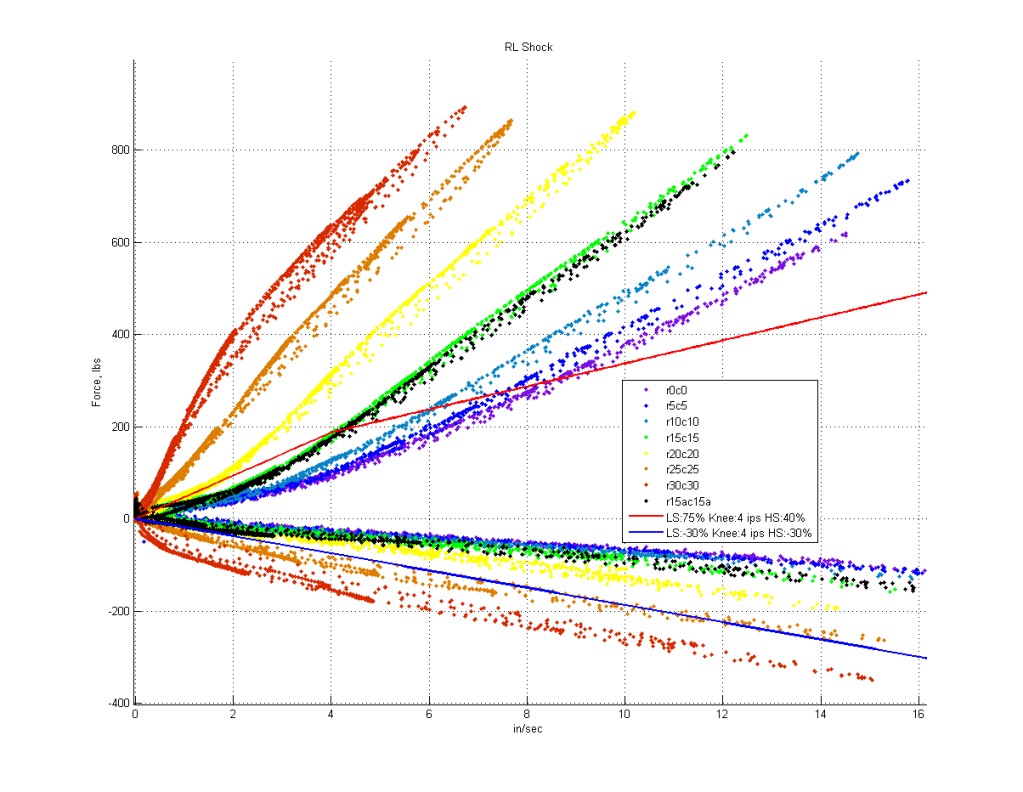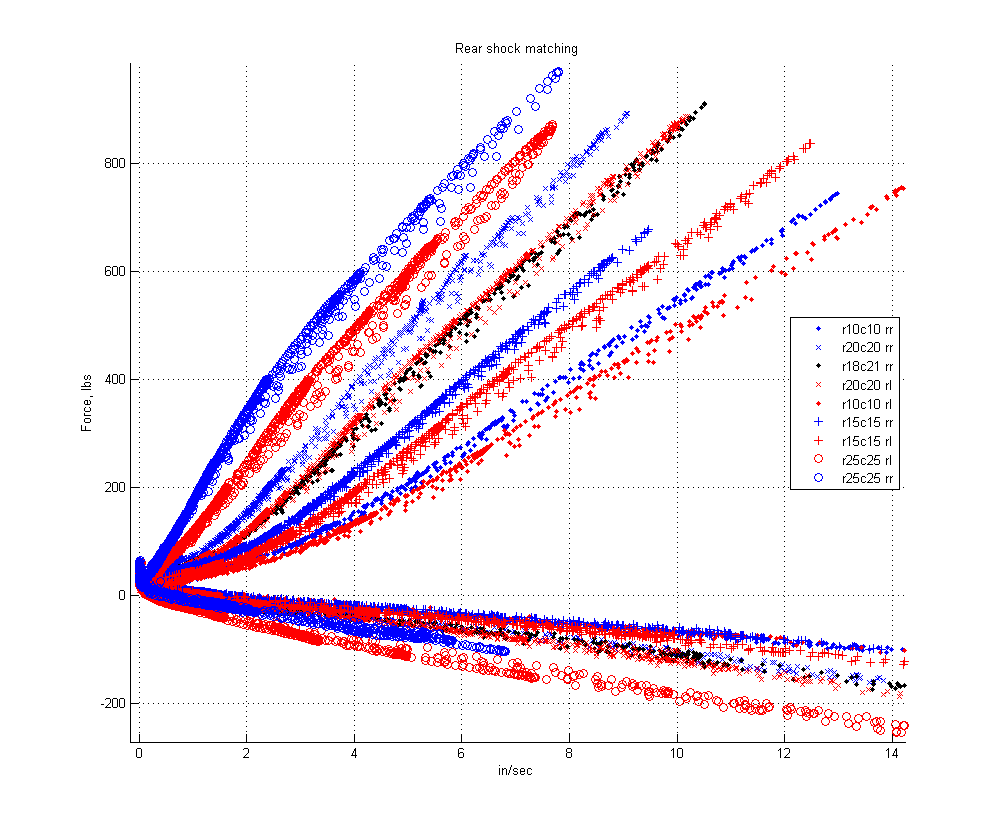I posted a similar thread to this one over at another forum that I'm a member of and got a pretty positive response, so I'm posting it here too as I thought there might be some people here who would appreciate it or who could perhaps learn something from it...:
I've decided to start this thread in an attempt to remind people that for the most part, you get what you pay for and that you shouldn't expect too much out of a "budget" setup.
This is a link to a 24/7 thread where Jeff from Tri-Point Engineering posted some striking shock dyno results:
Truth about K-Sports? - Mazda Forums
...and this is a link to a pretty well-known site that dissects and explains the difference between the "budget setups" and setups from the likes of Bilstein (from who I believe H&R sources their dampers), Ohlins, Penske, Koni, Dynamic, Sachs, etc. The site author takes some liberties and may go a bit overboard in his sweeping generalizations, but the major theme is a valid one:
DGs Autocross Secrets aka Autocross to Win - Shocks
In both cases, shock dyno testing reveals that at the very best, the "budget brands" (Tein, Raceland, Ksport, D2, etc.) are horribly inconsistent and at the very worst they're valved completely wrong and/or they do not at all live up to the claims of the manufacturer when it comes to their adjustability.
I'm not starting this thread to say that these products are completely worthless or that they don't have their place in the market, but I do think it needs to be pointed out that there is a reason you can buy some of these setups for substantially less than (or right around) the $1K price point. They simply aren't engineered well (and likely aren't even engineered on a platform-specific basis) and the shock dynos show it.
If this evidence isn't enough to convince you, or if you're curious to read more into it, I encourage you to do a google search for shock dynos or other evidence to the contrary. Time and time again, I think you'll find that these companies simply can't back up their claims with data, and you'll find plenty of people that toe the line of what I'm saying here.
Hopefully this will save some people who perhaps just didn't know any better from putting a product on their car that isn't what the manufacturer claims it is. I just want people to be as well-informed as possible.
-----------------------------------------------------------
In the interest of bringing products more relevant to the MS3 market into this thread, I've searched to see what I can find regarding shock dynos for a few more brands (also, if anyone else has more data they'd like to add to the discussion, please post it up and I'll update this OP):
Here's a plot for BC damper from a "BR Type" setup for an 8th gen Civic that were posted on another forum by a BC salesperson (note that this is only for one damper in each graph - 1 front damper and 1 rear damper - and for some reason one of the graphs is in metric units and one is imperial units, so making a judement about consistency across the dampers in a set cannot be made easily from these graphs):
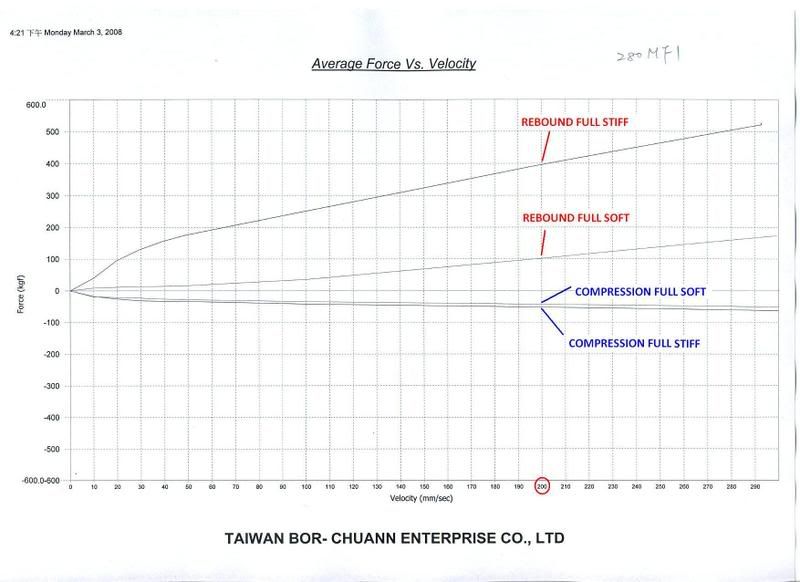
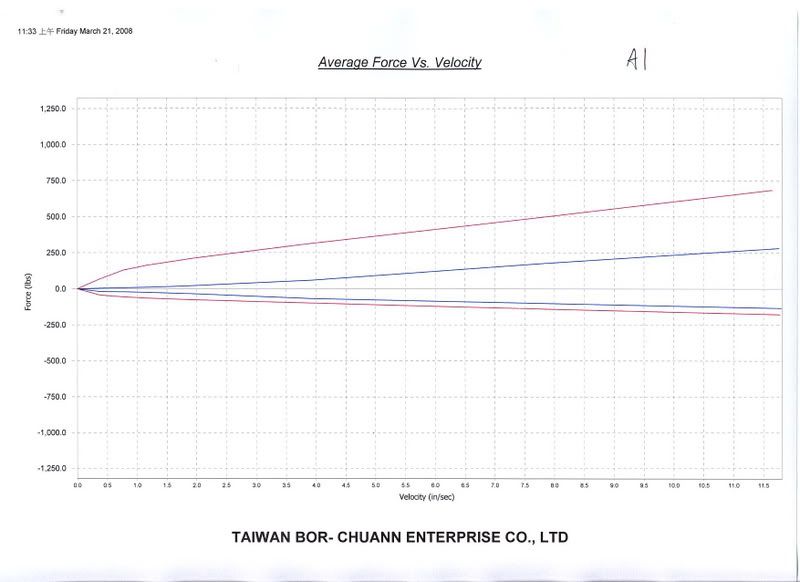
And here's the thread I pulled it from (the thread was initially started as a discussion about a Stance setup):
Stance Coilovers Information - 8th Generation Honda Civic Forum
And for some contrast here are the dyno plots that KW has on their website that show the shapes of the damping curves and how they change with rebound and compression adjustment (I tried for some time to find some "independently obtained" shock dyno results for a KW setup as well, but gave up after awhile. If you have some you'd like to add to the thread, please do - and I'll get them added to the OP):
Rebound:

Compression:

KW automotive North America Inc. Suspension -- Coilovers -- Shocks -- Springs
As you can see in the BC plots, there is really no compression damping adjustment to speak of, and the MINIMUM ratio of rebound:compression damping near mean velocity is roughly 2:1 (with an arguably useless 8:1 ratio at full stiff). It's no wonder people describe these things as bouncy/harsh, since the car is likely "jacked down" over sections of road/pavement with a series of small bumps and ends up riding on the bumpstops.
For anyone who'd like a very well-explained run-down of how the KW V3 valving works, you should check out this article:
Suspension Basics - Whiteline Swaybars & KW V3 Coilovers
I've decided to start this thread in an attempt to remind people that for the most part, you get what you pay for and that you shouldn't expect too much out of a "budget" setup.
This is a link to a 24/7 thread where Jeff from Tri-Point Engineering posted some striking shock dyno results:
Truth about K-Sports? - Mazda Forums
...and this is a link to a pretty well-known site that dissects and explains the difference between the "budget setups" and setups from the likes of Bilstein (from who I believe H&R sources their dampers), Ohlins, Penske, Koni, Dynamic, Sachs, etc. The site author takes some liberties and may go a bit overboard in his sweeping generalizations, but the major theme is a valid one:
DGs Autocross Secrets aka Autocross to Win - Shocks
In both cases, shock dyno testing reveals that at the very best, the "budget brands" (Tein, Raceland, Ksport, D2, etc.) are horribly inconsistent and at the very worst they're valved completely wrong and/or they do not at all live up to the claims of the manufacturer when it comes to their adjustability.
I'm not starting this thread to say that these products are completely worthless or that they don't have their place in the market, but I do think it needs to be pointed out that there is a reason you can buy some of these setups for substantially less than (or right around) the $1K price point. They simply aren't engineered well (and likely aren't even engineered on a platform-specific basis) and the shock dynos show it.
If this evidence isn't enough to convince you, or if you're curious to read more into it, I encourage you to do a google search for shock dynos or other evidence to the contrary. Time and time again, I think you'll find that these companies simply can't back up their claims with data, and you'll find plenty of people that toe the line of what I'm saying here.
Hopefully this will save some people who perhaps just didn't know any better from putting a product on their car that isn't what the manufacturer claims it is. I just want people to be as well-informed as possible.
-----------------------------------------------------------
In the interest of bringing products more relevant to the MS3 market into this thread, I've searched to see what I can find regarding shock dynos for a few more brands (also, if anyone else has more data they'd like to add to the discussion, please post it up and I'll update this OP):
Here's a plot for BC damper from a "BR Type" setup for an 8th gen Civic that were posted on another forum by a BC salesperson (note that this is only for one damper in each graph - 1 front damper and 1 rear damper - and for some reason one of the graphs is in metric units and one is imperial units, so making a judement about consistency across the dampers in a set cannot be made easily from these graphs):


And here's the thread I pulled it from (the thread was initially started as a discussion about a Stance setup):
Stance Coilovers Information - 8th Generation Honda Civic Forum
And for some contrast here are the dyno plots that KW has on their website that show the shapes of the damping curves and how they change with rebound and compression adjustment (I tried for some time to find some "independently obtained" shock dyno results for a KW setup as well, but gave up after awhile. If you have some you'd like to add to the thread, please do - and I'll get them added to the OP):
Rebound:

Compression:

KW automotive North America Inc. Suspension -- Coilovers -- Shocks -- Springs
As you can see in the BC plots, there is really no compression damping adjustment to speak of, and the MINIMUM ratio of rebound:compression damping near mean velocity is roughly 2:1 (with an arguably useless 8:1 ratio at full stiff). It's no wonder people describe these things as bouncy/harsh, since the car is likely "jacked down" over sections of road/pavement with a series of small bumps and ends up riding on the bumpstops.
For anyone who'd like a very well-explained run-down of how the KW V3 valving works, you should check out this article:
Suspension Basics - Whiteline Swaybars & KW V3 Coilovers
Last edited:

